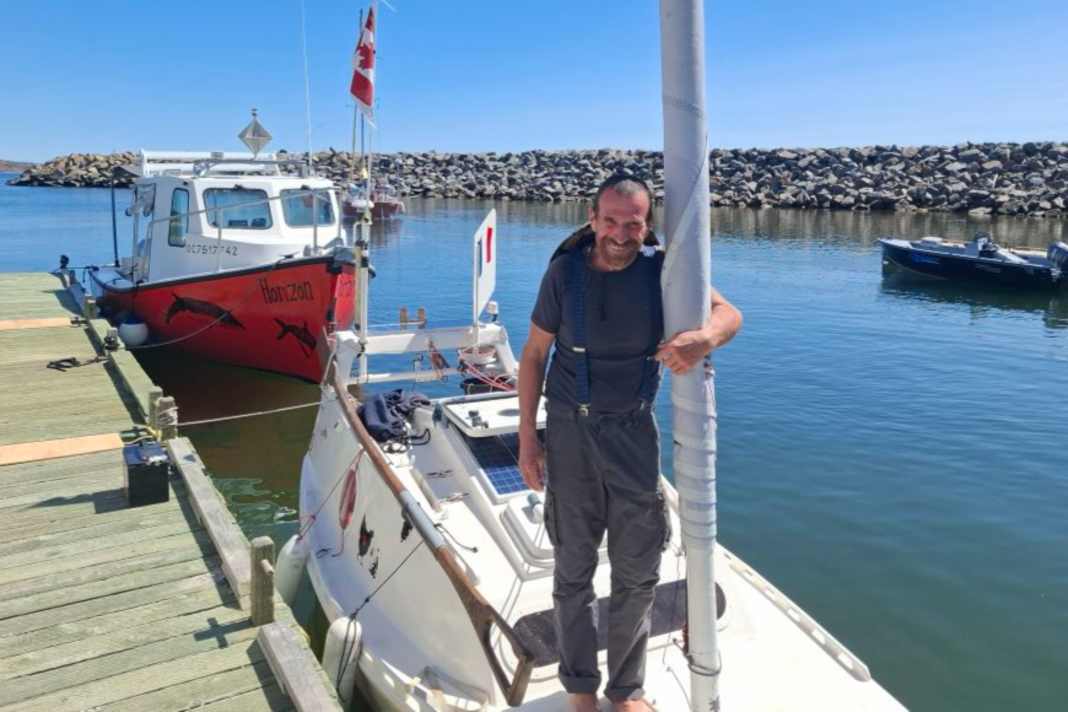



Yanns Quenet's first circumnavigation was already historic. No one had ever circumnavigated the globe in a four-metre-long plywood boat before. The Frenchman travelled at a snail's pace for three years in his "Baluchon", with his longest non-stop route taking 77 days. Without rainwater, he would have died of thirst.
The oddball Frenchman has been travelling with "Baluchon" again since June 2024 and has now arrived in Québec after stopovers in Cape Verde and Martinique. We received a brief message via WhatsApp: "I'm currently making the arduous journey up the St Lawrence River. I'm going to spend the winter in a cabin so that I can head for the Pacific coast next spring with a car and "Baluchon" on the roof. Then I'll set sail again and sail further west."
Quenet shows that he is always up for a bit of fun when he spontaneously takes part in a club regatta organised by the sailing club in Rimouski. The microsailor also attracts the attention of the local photographer Mélanie Joncas who documented the regatta and had never seen such a "cute boat" before.
But the St Lawrence River is far from child's play for Quenet and "Baluchon". The entrance to the Saguenay River in particular causes the adventurer to break out in a sweat, as he reports on his YouTube channel:
"The Saguenay is a large river, over 100 kilometres long and very deep. At low tide, all the water flows into the St Lawrence River. This creates some pretty impressive current effects, so I had to pinch my arse cheeks together. I would have liked to film a bit more, but I just couldn't let go of the helm. They call it 'la Marmite' here: there are lots of little pyramid-shaped waves and it's a bit like driving onto a reef. It's pretty crazy - I'm surprised I made it this far!"
After his excursion on the Saguenay River, microsailor Quenet continues his journey on the St Lawrence River to Québec City, making only "small flea jumps and sometimes even sailing backwards".
More articles on the daring adventures of the microsailors
- Adventure: sailing around the world on four metres: Yann Quenet has reached his destination!
- Microsailor: What does Yann Quenet actually do?
- Adventure: North Atlantic in a one-metre boat - the crazy Brit gets serious
- Microsailor: What does Andrew Bedwell actually do?
- Sven Yrvind: The whirlwind publishes his illustrated autobiography
- Microsailor: What does Sven Yrvind actually do?
The Saguenay-Marmit phenomenon
The Saguenay-Marmit phenomenon is a geological formation recognisable by circular depressions in the rock caused by the erosion of torrential rivers. In the Saguenay River, this phenomenon is particularly noticeable due to the strong current and the presence of hard stones that drive the erosion process. Marmites vary from small, round depressions to larger, irregular shapes and are often found in riverbeds where the current moves the stones in circular patterns.
